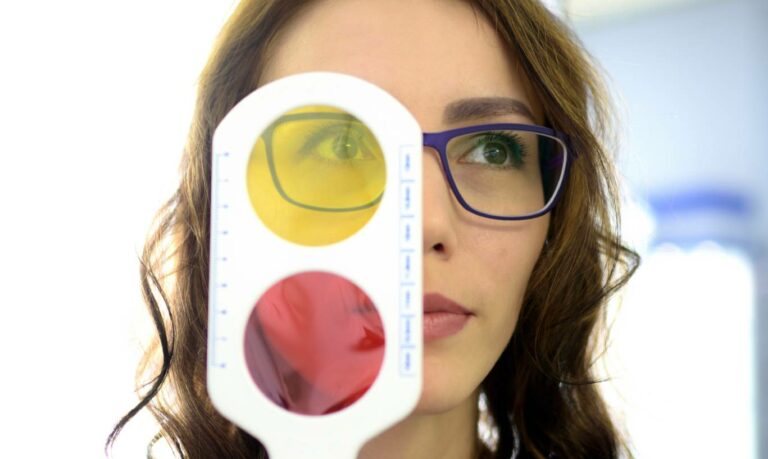What’s the difference between a student vision screening and a comprehensive eye exam? At the start of school, parents may receive a reminder from VisionFirst regarding a Back-to-School eye exam. While a complete eye exam is needed to enter Kindergarten, many parents may think a full exam is not needed for older school children because the student will be tested in the fall at their school. This type of school testing is referred to as a vision screening and is quite different from a comprehensive eye exam provided at VisionFirst.
Vision screenings test vision by reading an eye chart from a distance. It is usually performed by a parent volunteer and measures visual acuity. While these screenings can uncover some vision problems, they can’t measure precise changes in a child’s vision and eye growth. Screenings can be useful, but they provide less than 4% of the information generated during a comprehensive eye exam and miss up to 75% of children with vision problems.(1) Since a child’s eyes grow and change the most from 6 years of age through their teenage years(2), it’s important to be alert to any changes in their vision.
A comprehensive eye exam performed at VisionFirst is completed by a licensed optometrist with specialized equipment and procedures used for eye exams that are not included in vision screenings. During an exam, the eyes are dilated or the Optomap™ imaging system is used to give the doctor a fuller view inside the eye. With dilation and other special testing, signs of eye disease are more evident. In fact, by using specialized equipment, VIsionFirst doctors can detect many serious health conditions including diabetes, high blood pressure, autoimmune diseases and cancers. A full eye exam at VisionFirst includes checking for visual acuity just as the vision screens, but goes much further by checking to see if a prescription is needed, checking pupil size and reactivity, monitoring eye movement, performing tests for glaucoma, checking peripheral vision and much more.
VisionFirst recommends an annual eye exam to monitor any changes in the eye or to your vision. Appointments can be scheduled at any of our 16 locations in Kentucky and Southern Indiana. To view our locations, hours or to make an appointment, visit VisionFirstEyecare.com
(1)https://www.aoa.org/Documents/AOA%20Executive%20Summary%20Pediatric%20Eye%20Exam%20Guidelines%20Revised%2003.05.18.pdf (2)https://www.aao.org/eye-health/tips-prevention/eye-exams-101 (3)https://mymyopia.com/does-my-child-need-a-comprehensive-eye-exam/






